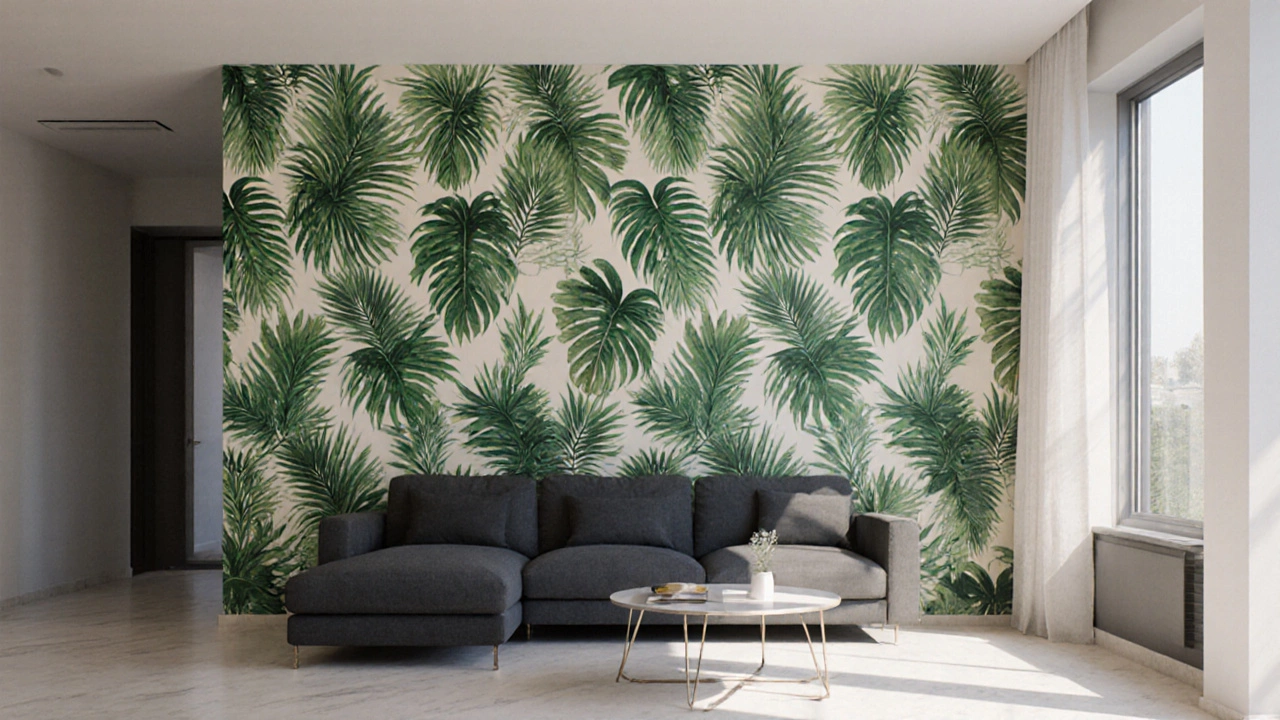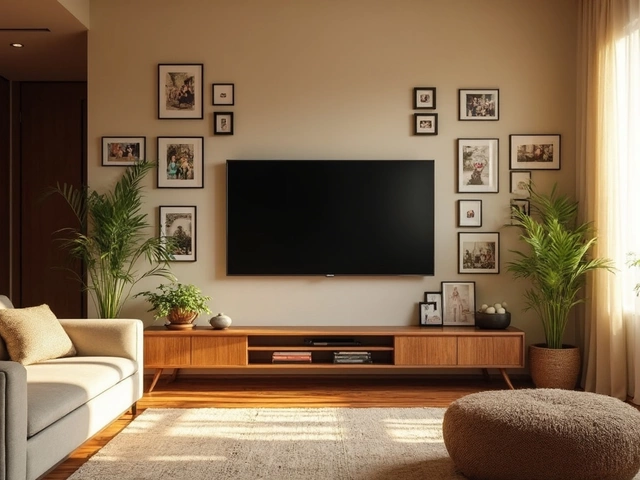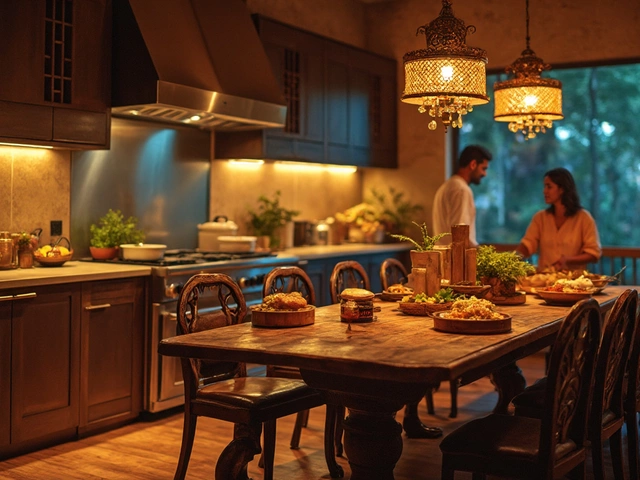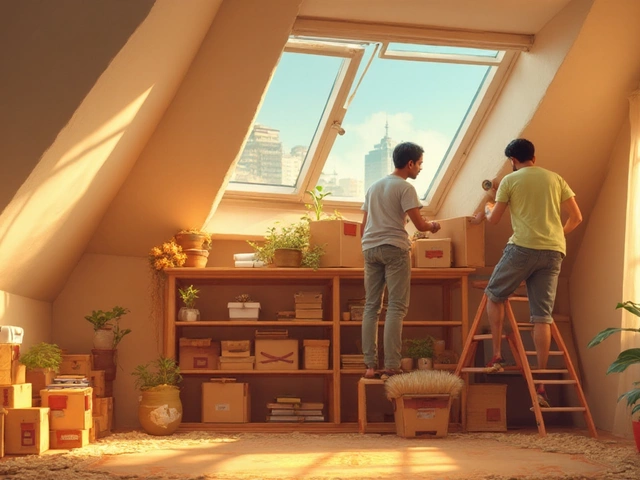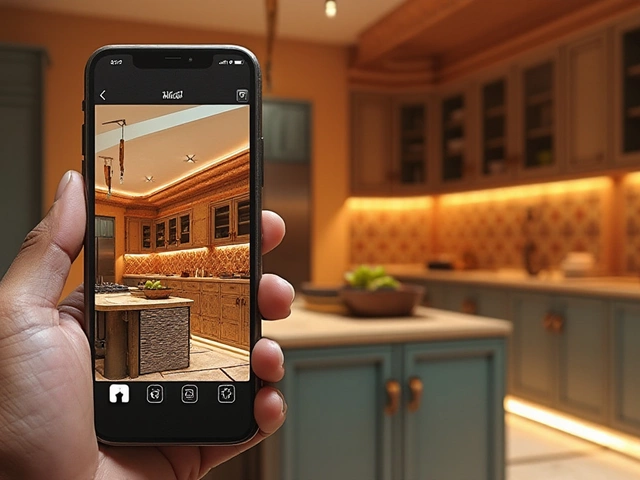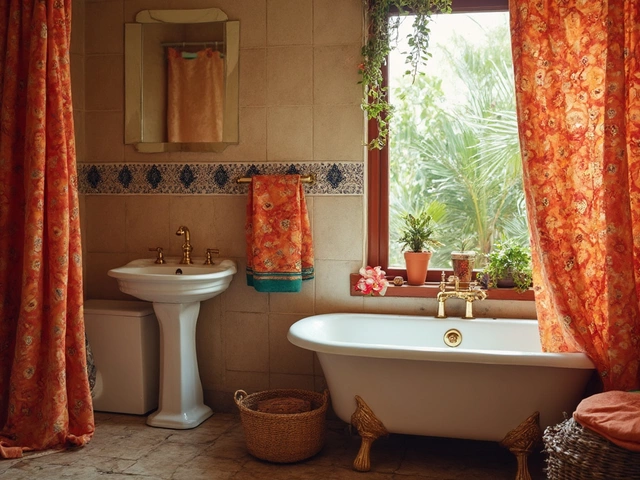Wallpaper vs Paint Decision Helper
Enter your preferences above and click "Get Recommendation" to see whether wallpaper or paint is best for your project.
Key Takeaways
- Wallpaper is still a strong design tool in 2025, especially for texture and pattern play.
- Peel‑and‑stick and eco‑friendly vinyl have solved many old‑school installation headaches.
- Paint remains cheaper and faster, but wallpaper beats paint on durability and visual depth.
- Sustainability matters - look for recycled fibers and low‑VOC inks.
- Choose wallpaper for accent walls, high‑traffic areas, or when you want a statement without permanent commitment.
When you hear the word wallpaper is a decorative wall covering that comes in rolls, printed or textured, and is applied with adhesive. Historically, wallpaper was seen as a formal, sometimes dated, interior finish. But the design world has shifted dramatically over the past few years, and the question “Is wallpaper outdated?” now deserves a nuanced answer.
What’s Hot in 2025? The Rise of Modern Wallpaper
Design magazines and online platforms are buzzing about the wallpaper trends that dominate modern homes. Here are the themes that keep popping up:
- Botanical and nature‑inspired prints - think oversized leaves, tropical vines, and soft grasses. They bring a touch of the outdoors inside.
- Geometric layering - overlapping shapes, 3‑D illusion patterns, and metallic accents add depth without clutter.
- Textured surfaces - raised linen, grasscloth, and woven vinyl give a tactile feel that paint can’t match.
- Custom digital prints - homeowners can upload a personal photo or artwork, turning a wall into a gallery.
These trends prove wallpaper is far from a relic; it’s evolving to meet contemporary tastes.
Types of Wallpaper and How They Differ
Not all wallpaper is created equal. Knowing the main families helps you pick the right one for your project.
| Type | Material | Durability | Cost (AU$ per roll) | Installation |
|---|---|---|---|---|
| Traditional Paste‑the‑Wall | Paper or fabric | Medium - good for low‑traffic rooms | 30-80 | Requires soaking, professional help recommended |
| Peel‑and‑Stick wallpaper (self‑adhesive) | Vinyl or non‑woven | High - resistant to moisture and wear | 40-120 | DIY friendly, no extra glue needed |
| Vinyl wallcoverings | Polyvinyl chloride (PVC) blend | Very high - ideal for kitchens and bathrooms | 50-150 | Requires paste, but offers superior water resistance |
| Mural / Photo wallpapers | Custom printed vinyl | Medium - depends on substrate | 80-200 | Usually peel‑and‑stick, can be ordered to size |
| Textured wall panels | Woven grasscloth, woven fabric, or 3‑D foam | Medium - may need gentle cleaning | 70-180 | Paste‑the‑wall or click‑together systems |
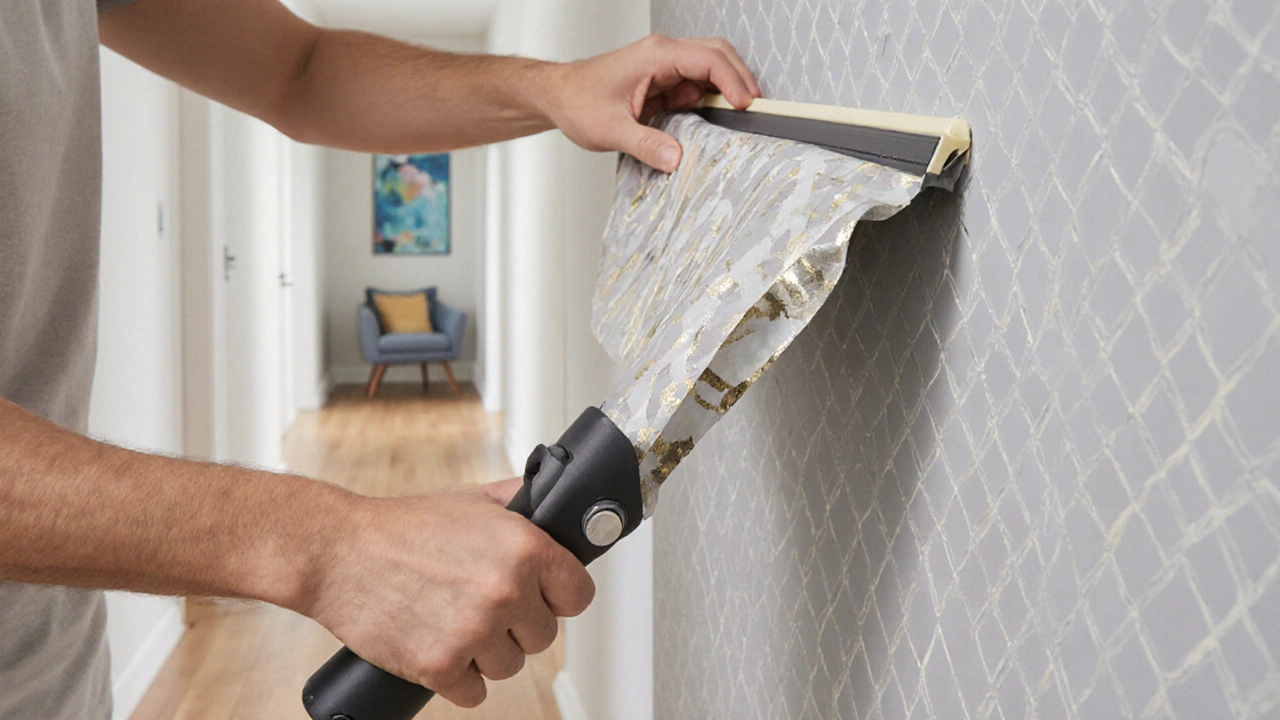
Wallpaper vs Paint: The Real Pros and Cons
Choosing between paint and wallpaper often feels like a trade‑off between budget, time, and visual impact.
- Cost: Paint generally costs less per square metre, especially for large rooms. However, premium wallpaper can be cost‑competitive when you factor in the durability and reduced need for touch‑ups.
- Installation time: Paint can be applied in a day, while wallpaper-especially traditional types-may take several days for prep, hanging, and drying.
- Durability: High‑quality vinyl or textured wallpaper resists scuffs and moisture better than most paints. In high‑traffic hallways, wallpaper often outlasts paint by 10+ years.
- Design flexibility: Paint offers endless color combos, but wallpaper provides patterns, textures, and 3‑D effects without the need for multiple coats.
- Environmental impact: Eco‑friendly wallpaper made from recycled fibers and low‑VOC inks can be greener than oil‑based paints, though water‑based paints have narrowed the gap.
Bottom line: Neither is universally better. It depends on the room’s function, your aesthetic goals, and how long you plan to stay put.
Sustainability Matters: Eco‑Friendly Wallcoverings
Consumers now ask, “Is my wallpaper sustainable?” Thankfully, the market responded.
- Recycled paper and fabric - Brands source post‑consumer waste, turning it into soft, breathable rolls.
- Low‑VOC inks - Reduce off‑gassing and improve indoor air quality.
- Biodegradable backing - Some peel‑and‑stick options use plant‑based adhesives that break down safely.
- Durability as sustainability - Longer‑lasting wallpaper means fewer repaint cycles, cutting overall material use.
If sustainability ranks high on your checklist, look for certifications like FSC, GREENGUARD, or Cradle‑to‑Cradle.
DIY Installation Tips & Common Pitfalls
Thanks to peel‑and‑stick options, many homeowners now tackle wallpaper themselves. Here’s a quick cheat‑sheet:
- Prep the wall: Clean, sand, and prime any glossy surfaces. A smooth substrate ensures the adhesive grabs.
- Measure twice, cut once: Use a laser level to mark vertical lines. Cut rolls a few centimeters over the top to allow trimming.
- Peel slowly: Remove the backing in sections, press the paper onto the wall, and smooth with a rubber squeegee to avoid bubbles.
- Seal the edges: For high‑moisture rooms, apply a clear edge sealant to prevent water seeping behind the paper.
- Trim and finish: Use a sharp utility knife and a metal ruler for clean edges around trim, outlets, and corners.
Common mistakes include skipping the primer (especially on glossy paint), letting the adhesive dry before smoothing, and ignoring humidity-especially in Sydney’s coastal climate, where moisture levels can fluctuate.
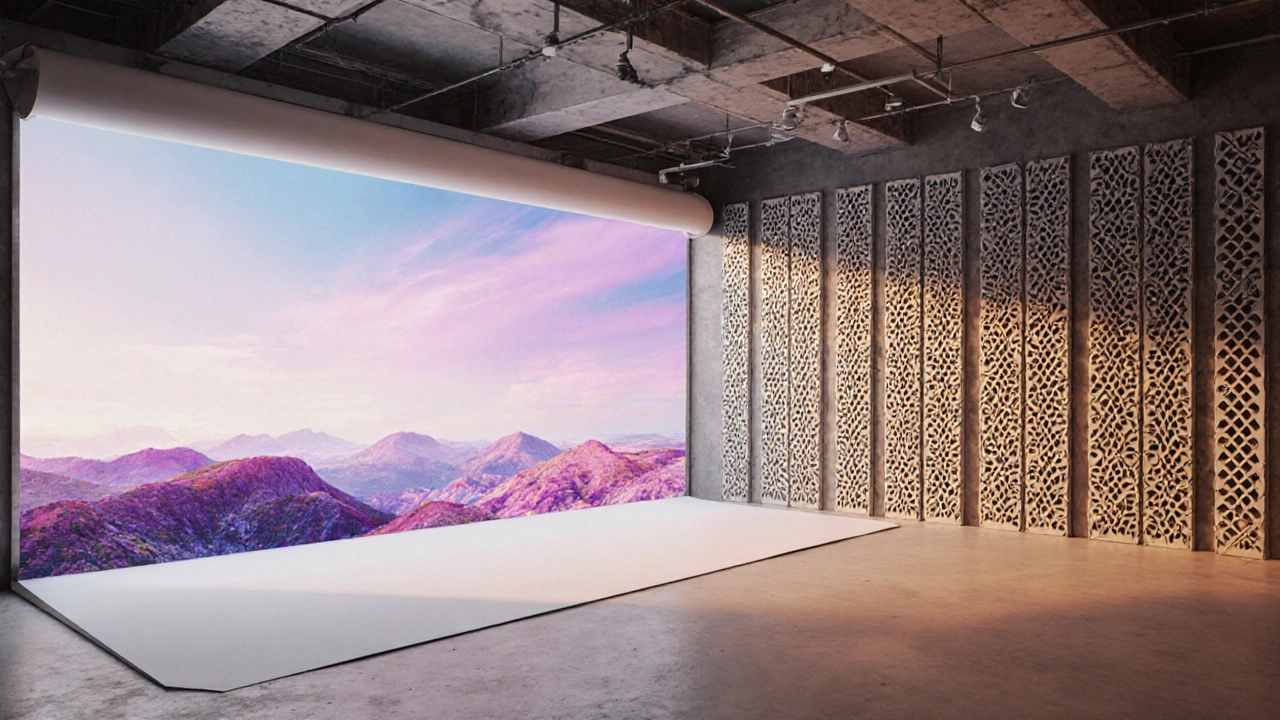
When Wallpaper Works Best (and When It Doesn’t)
Every design decision has a sweet spot. Use this quick guide to decide if wallpaper earns a place on your wall.
| Scenario | Recommended Finish | Why |
|---|---|---|
| Accent wall in living room | Bold patterned or textured wallpaper | Creates visual focus without overwhelming the space. |
| High‑traffic hallway | Durable vinyl or washable wallpaper | Resists scuffs better than most paints. |
| Kids’ bedroom | Peel‑and‑stick, removable wallpaper | Easy to change as tastes evolve. |
| Moisture‑prone bathroom | Vinyl wallcoverings or moisture‑resistant paint | Vinyl handles steam; paint can be a cheaper alternative if sealed properly. |
| Quick refresh on a budget | Paint | Lower material cost and faster turnaround. |
The Future of Wallcoverings: From Digital to 3‑D
Design tech keeps pushing the envelope. Here are two trends that could shape the next decade.
- Digital on‑demand printing: Apps let you design a pattern on your phone and have a roll printed and shipped in days.
- 3‑D printed panels: Using biodegradable polymers, manufacturers create molded wall pieces that catch light and add genuine depth.
Even if you stick with traditional rolls today, knowing where the industry heads helps you choose products that won’t look old in five years.
Frequently Asked Questions
Is wallpaper harder to remove than paint?
Peel‑and‑stick wallpaper can be removed in minutes with a little heat from a hair‑dryer. Traditional paste‑the‑wall rolls may require steaming or scoring, but they still come off without damaging plaster if done carefully.
Can wallpaper handle humid Sydney summers?
Yes, especially vinyl or moisture‑resistant options. Look for a product with a water‑repellent rating (often labeled “WR‑rated”). Proper ventilation and sealing edges further protect against humidity.
What’s the most eco‑friendly wallpaper?
Recycled paper or hemp‑based rolls with low‑VOC water‑based inks are top choices. Look for FSC‑certified fibers and Cradle‑to‑Cradle certification for a clear sustainability signal.
How long does wallpaper typically last?
High‑quality vinyl or textured wallpaper can last 10‑15 years in residential settings, often outlasting paint, which may need a fresh coat every 5‑7 years in busy areas.
Is DIY wallpaper installation risky?
With peel‑and‑stick products, risk is low. The biggest challenges are preparing a smooth wall and aligning patterns. Taking your time on the prep stage saves headaches later.
